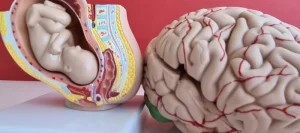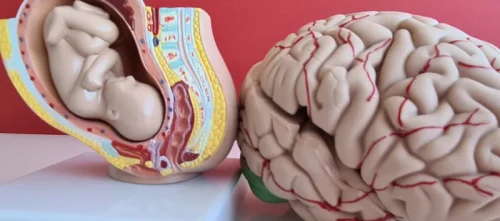
The AHA suggests moderate alcohol consumption for those who choose to drink, defining moderation as up to one drink per day for women and up to two drinks per day for men. It is important to note that these guidelines apply to healthy adults and should be adjusted for individuals with certain health conditions or those taking specific medications. In addition, the AHA advises against starting to drink alcohol solely for potential health benefits, as the risks can outweigh the advantages. It is crucial to exercise caution and be aware of individual tolerance and personal health circumstances when making decisions about alcohol consumption. Furthermore, they specified the definition of “one drink” offer clarity when it comes to alcohol consumption.

Acknowledgements
- Efforts to control alcohol addiction have just 50%–60% positive results in specific cessation programs 8,9.
- Irrespective of the mechanisms of the pathology, AF is a significant concern in the management of alcoholics.
- Different animal studies, an ethanol diet have observed a significant increase in the ventricular beta MHC isoform 44.
- Although secondary to the sarcoplasmic reticulum, mitochondria also serves as a calcium reservoir; another regulatory step of myosin activity and myocardial contractility.
- Get expert advice on whether you’re at higher risk of developing the disease, plus other key resources.
These oxidative stress biomarkers corresponded to myocardial fibrosis development and decreases in fractional shortening and cardiac output. Interestingly, these Substance abuse changes were prevented by the co-administration of the cytochrome P450 2E1 (CYP2E1) inhibitor, diallyl sulfate (100 mg/kg/d). Data from Jing et al., also support a role for CYP2E1 activation and changes in oxidative stress markers, such as superoxide dismutase, glutathione peroxidase and malondialdehyde protein levels (30). These investigators found that cardiac microsomal CYP2E1 activity was increased and corresponded to decreased superoxide dismutase and glutathione peroxidase activities and increased malondialdehyde levels in dogs that received alcohol (22%) in their water once per day for 6 months (30).
cellular Alterations in Alcoholic cardiomyopathy
According to most studies, the alcohol consumption required to establish a alcohol cardiomyopathy diagnosis of ACM is over 80 g per day during at least 5 years9-12. Unfortunately, it is well known that abstinence is difficult to achieve, and it is important to stress that alternative treatments are needed, including therapies to help with alcohol withdrawal, heart failure drugs, and other promising therapeutic approaches that focus on pathogenesis. In fact, Brandt et al.54 observed that in ALDH2-deficient mice, the most important increase in mitochondrial superoxide levels (which is the major species of ROS) is due to acetaldehyde, not ethanol. By inhibiting NOX2 (the most important superoxide-producing enzyme) with apocynin, they observed a decrease in ethanol- and acetaldehyde-induced superoxide levels. In patients with dilated cardiomyopathy, if additional questions remain after a history is obtained and noninvasive testing is performed, cardiac catheterization may be used to help exclude other etiologies of heart failure.
Hypertrophic Cardiomyopathy (HCM) Prognosis

Finally, it is worth stressing that a large majority of studies on the physiopathology and prognosis of ACM were conducted some years ago, prior to the development of our current understanding regarding the role of genetics in DCM67. According to recent data, a genetic form of DCM could be present in up to 50% of idiopathic DCM cases, and other specific forms of DCM such as peripartum cardiomyopathy have been shown to have a genetic basis in a significant number of cases68. It is therefore possible that patients with ACM could also harbour a genetic substrate that predisposes them to this form of cardiomyopathy. The suspicion that there may be an individual susceptibility to this disease is underscored by the finding that only a small group of alcoholics develop ACM, and that a proportional relationship between myocardial damage and alcohol intake has not been proven. Epidemiological studies analysing the relationship between excessive alcohol consumption and the development of DCM have found the existence of a reciprocal link between both disorders. The existence of a direct causal link between excessive alcohol consumption and the development of DCM is a controversial issue.
- The diagnosis of ACM is usually one of exclusion in a patient with DCM with no identified cause and a long history of heavy alcohol abuse.
- Chronic ethanol exposure, in combination with other stress signals, provides a trigger for cardiac apoptosis through activation of the mitochondrial permeability transition pore by physiological calcium oscillations 111.
- Along with signs of heart failure such as increased N-terminal pro-B-type natriuretic peptide, blood tests can provide hints suggesting chronic alcohol abuse.
- In contrast, European studies focusing on the prevalence of ACM included only subjects diagnosed with DCM and applied the consumption threshold of 80 g/d for ≥ 5 years, finding an ACM prevalence of 23%-47% among idiopathic DCM patients9-12 (Figure 1).
- Interestingly, Wu et al. using carotid pulse measurements, observed a gender dependent effect in preclinical ACM (asymptomatic ACM)—that is, female patients displayed no deviation in carotid pulse measurements values for either PEP or LVET while males did 36.
- Low concentrations of ROS appear to serve as signaling molecules, while higher levels propagate a destructive outcome 81-83.
- Since ethanol has multiple cell targets with different pathological mechanisms implicated, those different strategies to directly target alcohol-induced heart damage are only partially effective and can only be used as support medication in a multidisciplinary approach 112.
- Considering all the works conducted to date, it is clear that new studies on the natural history of ACM are needed, including patients treated with contemporary heart failure therapies.
- Although beyond the scope of this review, it is possible that certain dietary components and/or deficiencies may increase either the susceptibly or progression of ethanol-induced myocardial changes.
- Furthermore, for this review, certainty assessment was conducted by assessing the risk of bias, imprecision, inconsistency, and indirectness of the presented evidence.
In fact, there is an increasing consumption in particular groups, such as adolescents and young people 3,4. In the study by Gavazzi et al10, ACM patients who continued drinking exhibited worse transplant-free survival rates after 7 years than those who stopped drinking alcohol (27% vs 45%)10. In the second study, Gavazzi led a multicentre study in which, from 1986 to 1995, 79 patients with ACM and 259 patients with DCM were recruited10. Transplant-free survival after 7 years was worse among patients with ACM than among those with DCM (41% vs 53%). Among patients who continued drinking heavily, transplant-free survival was significantly worse than in non-drinkers (27% vs 45%). The first paper to assess the natural history and long-term prognosis of ACM was published by McDonald et al69 in 1971.

- This ethanol misuse at high consumption rates causes a variety of health problems, ethanol being the sixth most relevant factor of global burden of disease and responsible for 5.3% of all deaths 5.
- The authors examined the prevalence of cardiomegaly by means of chest x-rays and related it to alcohol consumption among a consecutive series of Japanese males of working age.
- In spite of numerous studies, the sequence of events that occur in alcohol-induced myocardial damage is still highly controversial.
- Despite this clear epidemiological evidence of ethanol’s unsafe consumption and increased health risk, results of consumption policies are not effective enough.
- The effect of a low dose of alcohol consumption on the cardiovascular system has been also extensively evaluated with evidence of a dual effect, beneficial for coronary artery disease at low doses 44 but reversing to a damaging effect at moderate to high doses 19.
- Myocyte cytoskeletal structure 21, connexin channel communication, and desmosomal contacts are affected by ethanol, causing structural cell instability 105.
We identified main themes and sub-themes to provide a comprehensive overview of the current state of knowledge regarding ACM. By following this methodology, we aim to contribute to the existing body of knowledge on ACM, providing a reliable and up-to-date understanding of its pathogenesis, clinical features, diagnostic approaches, treatment options, and potential preventive strategies. Echocardiography is perhaps the most useful initial diagnostic tool in the evaluation of patients with heart failure.